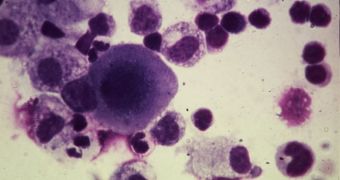Massachusetts General Hospital experts led by Tayyaba Hasan, who is also a Harvard Medical School professor of dermatology, announce the development of a new method to fight pancreatic-cancer cells. This type of cancer is still considered to be one of the most devastating and difficult to treat ones, therefore any improvement made in this area could significantly affect the quality of life of many individuals suffering from the condition, Technology Review reports. Hasan led the research effort that saw the new, animal-tested method of fighting cancer come to fruition.
The approach consists of loading tiny, nanoscale particles with two or more drugs, before sending them against cancer-cell tumors. The new nanostructures combine two technologies, the researcher says, namely light-based therapy and molecules that prevent the formation of new cancer cells, while destroying the old ones in the process as well. The cancer-research community is very excited about the new study, even if thus far it has only proven its effects on mice. One of the main reasons why this excitement persists is the fact that, for the first time in more than 30 years, scientists have a chance to bring pancreatic cancer-related mortality rates down.
Generally, once they have been diagnosed with pancreatic cancer, patients live for an average of six months, and only about five percent of them reach the five-year mark. “In terms of a patient population, there is very little we can do for them once we find the cancer,” the Director of the University of Pennsylvania Abramson Cancer Center, Craig Thompson, explains. The new results were presented at the International Conference on Molecular Targets and Cancer Therapeutics, held on November 17. The meeting was organized by the American Association for Cancer Research, the US National Cancer Institute (NCI), and the European Organization for Research and Treatment of Cancer.
In the experiments, mice were injected with human pancreatic-cancer cells, and then allowed to develop the disease. They were afterwards injected with a single dose of the nanocells, and their evolution was noticed. As opposed to the rodents in a control group, those in the test group showed a significant drop in the size of their tumors, hinting at the fact that the treatment was highly effective. “Injecting these things as separate entities is not as effective as combining them into one construct,” Hasan adds.

 14 DAY TRIAL //
14 DAY TRIAL //